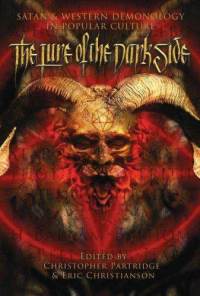 The publication Relegere: Studies in Religion and Reception, includes a book review by Steve A. Wiggins of The Lure of the Dark Side: Satan and Western Demonology in Popular Culture, edited by Christopher Partridge and Eric Christianson (London: Equinox, 2009). The review touches on a number of areas covered by contributors, including a chapter describing changes in depictions of vampires in cinema:
The publication Relegere: Studies in Religion and Reception, includes a book review by Steve A. Wiggins of The Lure of the Dark Side: Satan and Western Demonology in Popular Culture, edited by Christopher Partridge and Eric Christianson (London: Equinox, 2009). The review touches on a number of areas covered by contributors, including a chapter describing changes in depictions of vampires in cinema:
Titus Hjelm’s “Celluloid Vampires, Scientization, and the Decline of Religion,” is a fascinating analysis of the changing standards of vampires in movies. The classic Hollywood vampire of the early twentieth century was a manifestation of spiritual evil whereas more modern vampires are often explained scientifically by genetic mutations or viruses. Comparing classic Hammer Studio vampire movies with the Blade and Underworld series, Hjelm argues that the “migration of the vampire soul” (118) follows the decline in religious belief in society. The vital role of blood and the means of destroying vampires reflect this shift. If caught in a dark, Transylvanian street it is better to have a gun with ultraviolet bullets than to go armed with a crucifix. Recent developments further confirm Hjelm’s thesis: Justin Cronin’s new novel The Passage features viral vampires and word is out that Tim Burton is working on a Dark Shadows movie to be released next year. It will be worth observing how the conflicted soul of Barnabas Collins will fit into this mix of modern vampires.
As this positive review concludes it does not one shortcoming in the bibliography in the absence of Douglas Cowan’s Sacred Terror: Religion and Horror on the Silver Screen (Waco: Baylor University Press, 2008), described as another example of work “demonstrating the close connection of religion and horror.”
Related posts:
“Titus Hjelm – From Demonic to Genetic: The Rise and Fall of Religion in Vampire Film”
“Interview with Douglas Cowan: The Unholy Human, Fanaticism, and Fear of the Flesh”





There are no responses yet